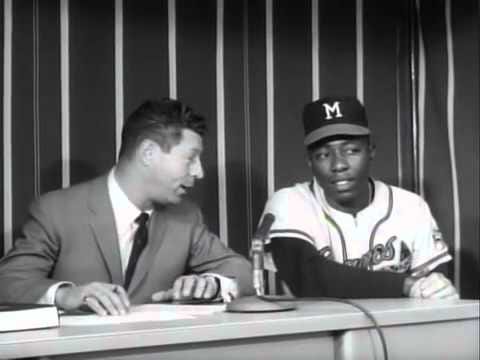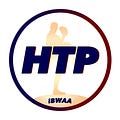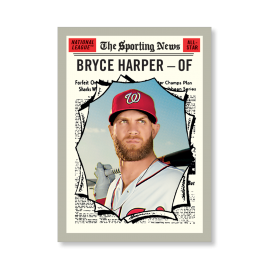IBWAA members love to write about baseball. So much so, we've decided to create our own newsletter about it! Subscribe to Here's the Pitch to expand your love of baseball, discover new voices, and support independent writing. Original content six days a week, straight to your inbox and straight from the hearts of baseball fans.
Happy Cinquo de Mayo !!
Pregame Pepper
Did you know…
Jacob deGrom’s complex five-year, $185 million Texas contract contains a conditional 2028 clause that becomes a club option if the 34-year-old right-hander has Tommy John surgery or is on the IL for any elbow or shoulder-related injury for either 130 consecutive days in a season or 186 consecutive days over multiple seasons. (The price of that club option ranges from $20MM to $37MM if he hits certain innings thresholds and finishes in Cy Young Award voting over the life of the contract.) If deGrom avoids those injury benchmarks, passes a physical after the 2027 season, pitches at least 160 innings, and has a top-five Cy Young finish in 2027, the option converts into a $37MM player option.
Marcell Ozuna, the forgotten man of baseball, has suddenly found his stroke, hitting three homers (one a grand-slam) in Miami over the last two games . . .
Xander Bogaerts has homered in four different countries . . .
Yankees lefty Nestor Cortes becomes a righty when he plays ping-pong . . .
Speaking of the Yankees, Yankees righty reliever Jonathan Loaisiga will undergo surgery to remove a bone spur from his throwing elbow and won’t be able to throw for the next 3-6 weeks, perhaps keeping him sidelined into September . . .
Liam Hendriks, the White Sox closer who announced two weeks ago that he’s cancer-free after a battle with non-Hodgkin’s lymphoma, will start a minor league rehab assignment this weekend . . .
Brandon Nimmo and Francisco Lindor of the Mets both began their careers against Braves fireballer Spencer Strider by going 5-for-10 . . .
Erstwhile Mets PR man Jay Horwitz says “one-and-done” when asked about doing another book to follow his hilarious Mr. Met . . .
At altitude of 7,300 feet, the two teams that played in Mexico City last Saturday (Giants and Padres) combined for 11 home runs, two shy of the major-league record set by the D-backs and Phillies in 2019.
Leading Off
Be Careful What You Wish For, Phillies Fans
Bryce Harper’s spirit was willing, but how strong is the flesh and bone?
By Jeff Kallman
“You know,” says an anonymous baseball executive to The Athletic’s Jayson Stark, “people have said a lot of things about Bryce Harper over the years. How he carries himself. The brashness. Cover of Sports Illustrated at 14 or 15 years old. But no one has ever said Bryce Harper is not a good teammate or doesn’t care about winning.”
No one but enough among Joe and Jane Fanjerk, as any perusal of about 10 years’ worth of social media attests. To them, Harper must never be forgiven for that early brashness, that SI cover as a teenager, even his unapologetic applause for the idea of letting the kids have fun out there.
But Harper’s accelerated return to the Phillies following offseason Tommy John surgery may yet give the Fanjerks another reason not to forgive him. If he should re-injure himself in the line of duty soon enough, the Fanjerks are liable to take one of two stances. Stance One: He really is a fragile goldbrick! Stance Two: What a jackass he was to come back too damn soon!
For most major league players, any injury at all can be seen as evidence of weakness if the injured doesn’t return “soon enough.” If they’re top of the line players before the injury but become average to below average to Jacoby Ellsbury (barely able to play during too much of his Yankee tenure, through no fault of his own) after the injury, the Fanjerk Family sees evidence of moral turpitude.
From most indications, and this, too, may be outside the norm for baseball teams, nobody in the Phillies organization put a gun to Harper’s head to compel his return this far before the All-Star break. Harper himself all but willed himself back to his May 3rd return. Including the part about being willing to play first base and learn on the job because incumbent Rhys Hoskins lost this season to a knee injury.
Baseball’s history includes several landfills worth of the litter from players who returned too soon from serious injuries. Some returned so swiftly under team pressure; some returned so swiftly under their own pressure believing the team might pressure them yet. Some returned so swiftly because they were human enough to feel lost away from the game’s play and competition. Some looked to be on Cooperstown tracks until the injuries struck in the first place. Very few were the same players after as before.
Harper’s return to action Tuesday proved the kind of thing in which you could say he began a delayed spring training. Dodger pitcher Julio Urias struck him out twice and got him to ground out to the third baseman; Dodger reliever Phil Bickford struck him out opening the top of the ninth. The Dodgers made it easy for him to have a bad first night back in the first place, blowing the Phillies out 13-1.
“For him to just say, ‘You know what? I’m going to break the all-time record for how fast I come back from this’,” the aforementioned executive told Stark.
And two, ‘If you want me to go work at first base, I’ll go do it, because Rhys Hoskins tore his ACL, and we need a first baseman, and it’s the right thing to do. And it doesn’t matter that I’ve never played there before. I’ll figure it out.’ That’s amazing.
Not many players of his status are just going to go do that. And we are watching two of them right now, because Mookie Betts is playing shortstop for the Dodgers, and Bryce Harper is volunteering to play first base for the Phillies, coming off a record-setting return from Tommy John. These are special players that care about winning and are willing to push themselves, their bodies and their minds to unbelievable places.
Today Harper’s a hero because he did push, shove, yank, throw himself back a couple of months before it was believed he’d be able to with a fully clean bill of health. And, elect to play an unfamiliar field position to help fill a glaring need regardless that he’ll be learning on the job.
In merely mortal players, that combination is merely combustible. In a still-potential Hall of Famer, who had enough injury-interrupted seasons coming in, “combustible” may not be adequate to describe it, if Harper proves to have pushed his body not to unbelievable places (like another pennant-winning bomb?) but to another injury-instigated layoff, if not the premature end of his career.
Remember, Harper plays for the team in Philadelphia. The city whose reputation regarding sports fans suggests that a Philadelphia wedding ends with the clergyman pronouncing the happy couple husband and wife before telling the gathering, “You may now boo the bride.”
Jeff Kallman is an IBWAA Life Member who writes Throneberry Fields Forever. He has written for the Society for American Baseball Research, The Hardball Times, Sports-Central, and other publications. He has lived in Las Vegas since 2007, where he plays the guitar and writes music when not writing baseball. He remains a Mets fan since the day they were born.
Cleaning Up
The Original Home Run Derby Was The Best One
By Dan Schlossberg
I’m a firm believer that the imitation is never as good as the original.
Let’s take Home Run Derby as a case in point.
A half-hour syndicated show that launched on April 4, 1960, it pitted a pair of sluggers against each other every week.
Hank Aaron won the most money — $13,500 — but Mickey Mantle had the most home runs, 44 over five appearances.

Filmed at Wrigley Field in Los Angeles, where the expansion Angels would later spend a season, the show was filmed in 24-minute segments to allow for commercial breaks and hosted by former Hollywood Stars announcer Mark Scott.
Thanks to Andy Strasberg in his new book Home Runs, we know that Aaron beat Eddie Mathews, 4-3, in the only match of teammates; that Willie Mays once told Scott to pipe down because the broadcaster was ruining his concentration; and that most participants wore their road grays rather than their home uniforms.
Strasberg also tells us that Snider hit a palm tree with a home run during his unsuccessful contest against Aaron; that Harmon Killebrew hit the longest home run; and that pitchers were paid $100 for every gopher ball they served up.
Each of the 16 existing teams at the time were represented except for the Chicago White Sox, Jackie Jensen hit more homers (14) in a single competition than anyone else, and that the show aired in 49 states and 159 markets.
According to Strasberg, outfielder Jim Marshall once reported that an Aaron home run made a loud noise when it crashed into a garbage can on the far side of the outfield fence.
The pilot, shot in 1959, featured a match of Mays and Mickey Mantle, since both had enjoyed 50-homer seasons.
Players could win $2,000 plus expenses. Obviously, those were the days when egos were bigger than contracts.
At least it was fun, thanks to ongoing interviews between host and participants. Although the seven-figure pot in today’s All-Star Home Run Derby is a lofty prize, that competition often turns boring. Just ask Bud Selig what he thought of Bobby Abreu’s 41-homer “performance” at Comerica Park.
The original Home Run Derby ended after a one-year run because its popular host died of a sudden heart attack at age 45 on July 13, 1960. The producers decided not to replace him or continue the show.
Here’s The Pitch weekend editor Dan Schlossberg of Fair Lawn, NJ remembers watching Home Run Derby when it was new. And he makes a point of avoiding the overly-commercial clash that precedes every All-Star Game. Dan’s e.mail is ballauthor@gmail.com.
Timeless Trivia
“I was walking up Fifth Avenue near Rockefeller Center with Whitey Ford some years ago. Eight blocks and no one recognized him. I said, ‘...what's with this?’ And he said, ‘It's because I'm walking with you! If I was walking with Mick, we'd have a police escort!’”
— Marty Appel in his new book Pinstripes by the Tale
Whitey Ford never pitched a no-hitter but four pitchers threw a no-hitter in their first start: Tyler Gilbert of the Arizona Diamondbacks (2021), Bobo Holman (1953), Bumpus Jones (1892), and Theodore Breitenstein (1891) . . .
Warren Spahn threw two no-hitters but didn’t get the first one until he turned 39 . . .
Greg Maddux, Tom Glavine, John Smoltz, Roger Clemens, and Steve Carlton combined for 18 Cy Young Awards but zero no-hitters . . .
Randy Johnson finished on the wrong end of a 1-0 no-hitter in his home Arizona ballpark when Jose Jimenez found his 15 minutes of fame for the Cardinals . . .
Bob Feller once said that throwing a one-hitter is like being the second man on the moon.
Know Your Editors
HERE’S THE PITCH is published daily except Sundays and holidays. Benjamin Chase [gopherben@gmail.com] handles Monday and Tuesday editions, Elizabeth Muratore [nymfan97@gmail.com] does Wednesday and Thursday, and Dan Schlossberg [ballauthor@gmail.com] edits the weekend editions on Friday and Saturday. Readers are encouraged to contribute comments, articles, and letters to the editor. HTP reserves the right to edit for brevity, clarity, and good taste.




Good stuff, Dan. The original Senators franchise, even with a last-place finish in '59, had three players appear in Home Run Derby: Harmon Killebrew, Jim Lemon and Bob Allison. Previous A.L. homer champ Roy Sievers was hurt a lot in '59. He could represented the White Sox, had the show gone another year.
Mantle, BTW, chose to bat right-handed in all his appearances from what I've read.